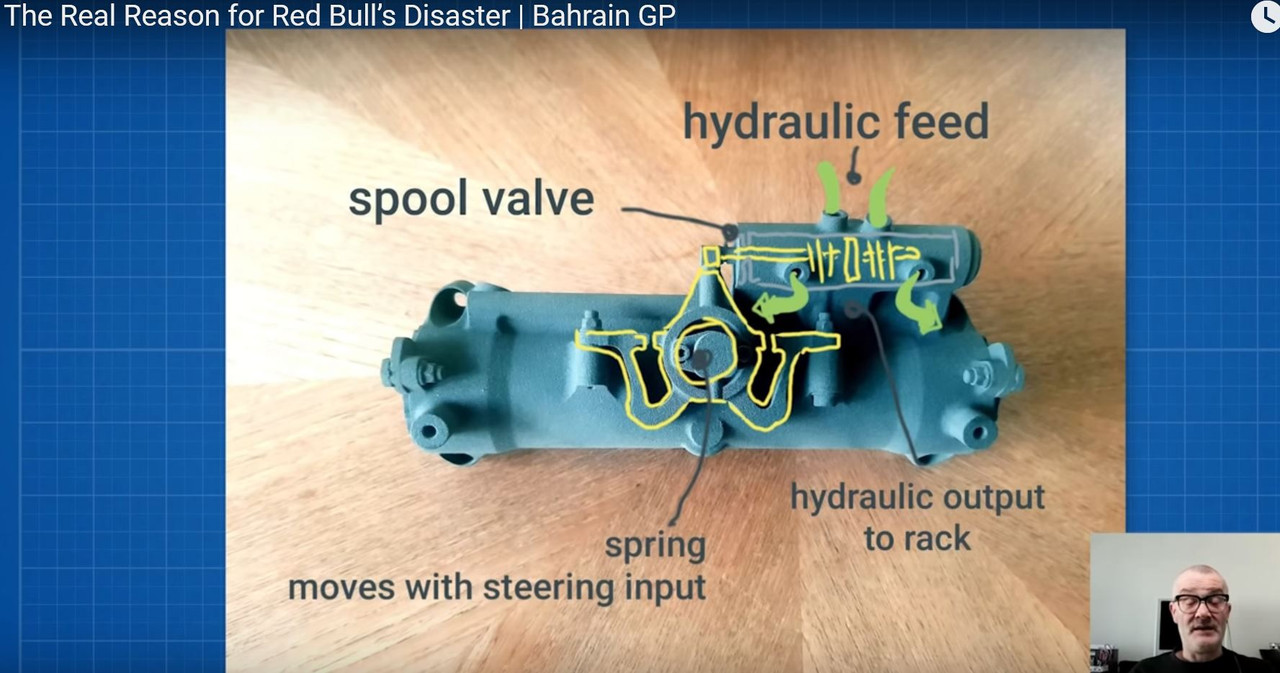doing that before 4th PU is not only pointless but also detrimental. Now if they introduce a reliability upgrade they could update only the 3rd PU, having already homologated the first 2
- Login or Register
No account yet? Sign up

doing that before 4th PU is not only pointless but also detrimental. Now if they introduce a reliability upgrade they could update only the 3rd PU, having already homologated the first 2
No, PU1 just needs to go to Sakura for in depth inspection so they know what's wrong with it and if its safe to run it again. As there is no other unit in his pool yet he needs to take a second PU.
I hope it can be used again. But the new engine that he had taken before, reportedly just broke down. God, it is only used for one free practice.


PlatinumZealot wrote: ↑25 Mar 2022, 16:02Material selection is one of the first things you do as a designer. And it's pretty black and white usually. If you see alcohol whether 1% or 50% you will use alcohol resistant material.atanatizante wrote: ↑25 Mar 2022, 10:16
...
So what I`m thinking about the main reason is that when the car is running in a race at the end of it when has low fuel levels there are at least 3 conditions that are occurring:
1. fuel has the highest temperature in the fuel tank during a race
2. fuel and alcohol acts both as a solvent and for this year has twice the solvent/dissolving power
3. time sufficient to dissolve/attack etc. the resin in which lifting pump electronics were incapsulated, hence leading to this failure ...
E10 is not that corossive. It takes months or years to destroy hoses and seals in ill-equipped cars. The bigger problem was sludge it cleaned off the walls jamming up the injectors!


It wasn't E10 degrading anything. They confirmed its low suction pressure. Very likely way below NPSHR required for the pump.atanatizante wrote: ↑28 Mar 2022, 09:47PlatinumZealot wrote: ↑25 Mar 2022, 16:02Material selection is one of the first things you do as a designer. And it's pretty black and white usually. If you see alcohol whether 1% or 50% you will use alcohol resistant material.atanatizante wrote: ↑25 Mar 2022, 10:16
...
So what I`m thinking about the main reason is that when the car is running in a race at the end of it when has low fuel levels there are at least 3 conditions that are occurring:
1. fuel has the highest temperature in the fuel tank during a race
2. fuel and alcohol acts both as a solvent and for this year has twice the solvent/dissolving power
3. time sufficient to dissolve/attack etc. the resin in which lifting pump electronics were incapsulated, hence leading to this failure ...
E10 is not that corossive. It takes months or years to destroy hoses and seals in ill-equipped cars. The bigger problem was sludge it cleaned off the walls jamming up the injectors!
Maybe Scarbs has better authority and knowledge than me and you believe him when he said it`s a true possibility that the new fuel had affected the plastics which encapsulates fuel pump electronics:
http://postimg.cc/8F0rVxqf
image post
But if the E10 was more volatile would it not be more prone to 'producing' vapor locks?PlatinumZealot wrote: ↑28 Mar 2022, 18:12It wasn't E10 degrading anything. They confirmed its low suction pressure. Very likely way below NPSHR required for the pump.atanatizante wrote: ↑28 Mar 2022, 09:47PlatinumZealot wrote: ↑25 Mar 2022, 16:02
Material selection is one of the first things you do as a designer. And it's pretty black and white usually. If you see alcohol whether 1% or 50% you will use alcohol resistant material.
E10 is not that corossive. It takes months or years to destroy hoses and seals in ill-equipped cars. The bigger problem was sludge it cleaned off the walls jamming up the injectors!
Maybe Scarbs has better authority and knowledge than me and you believe him when he said it`s a true possibility that the new fuel had affected the plastics which encapsulates fuel pump electronics:
http://postimg.cc/8F0rVxqf
image post